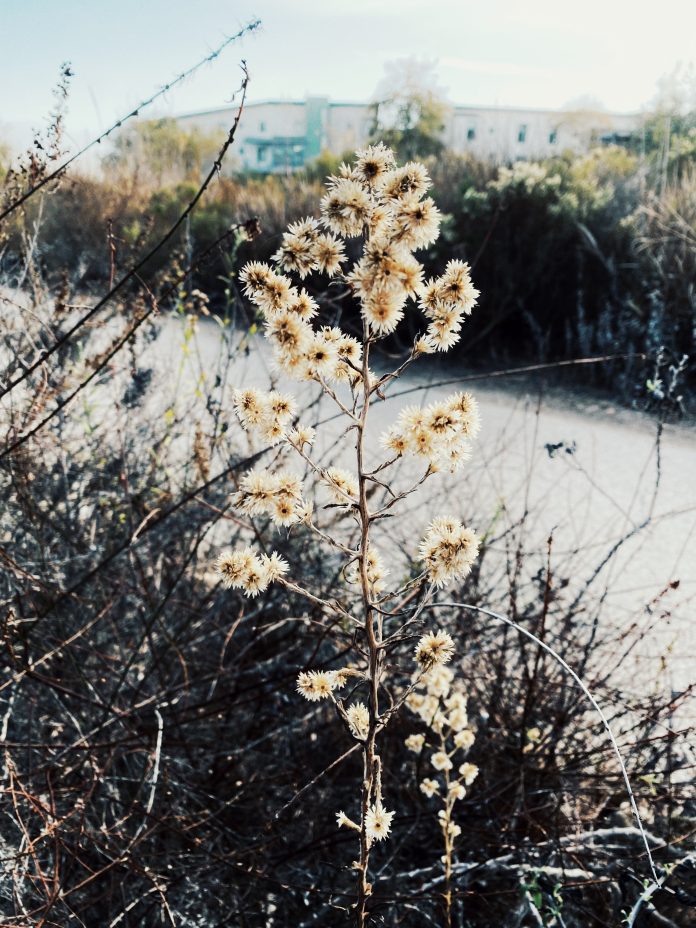Natalie Mifflin
Contributing Writer
Gnaphalium californicum, California everlasting, and rabbit tobacco — all of these names describe the plant that looks weed-like if observed with only a glance, but a closer look leads observers to see its beauty. However, this plant has much more to offer than its unique looks.
This species of flora is native to the west coast of North America, stretching from Washington to California, where it gets its name. It can be found in coastal sage scrub, chaparral, or woodlands, but it can also make its place in disturbed environments as a pioneer plant by means of putting down roots and rebuilding land where there are few other living species.
Since the paths behind UC Santa Barbara’s (UCSB) Manzanita Village and around the lagoon house these plants, I asked Johnny Alonzo, an employee at UCSB’s Cheadle Center for Biodiversity and Ecological Restoration (CCBER), about its role on campus. His response was that California everlasting can “colonize an area after a disturbance that destroys plant cover such as fires, floods, landslides, and even human disturbances […] they help begin the process of repairing the environment so that other species can also occupy it.”
California Everlasting can “colonize an area after a disturbance that destroys plant cover such as fires, floods, landslides, and even human disturbances. So they help begin the process of repairing the environment so that other species can also occupy it
The plant has several properties that make it an ideal candidate for organic, as well as human-mediated, ecological restoration. California everlasting is a fast-growing and fast-spreading plant whose roots can break up and draw nutrients from compacted or disturbed soil that would otherwise be unavailable to less hardy plants.
Its hardy nature allows it to grow with relatively dry conditions and to spread its seeds even after the flowers have dried up. As it dies, its debris becomes mulch, providing nutrients and new soil for other plants and microbes to live in. But its uses are not just limited to the environment.
California everlasting was also used by the Chumash people — the indigenous residents of the Santa Barbara area — for medicinal purposes. Using boiling water, you can make a tea that acts as an astringent for pulmonary and nasal mucus. Some even use this tea as an appetite suppressant for weight loss. However this plant is used, its uniqueness does not only come from its practicality.
The flower is a relative to the dandelion, marigold, sunflower, and even dandelion, which are all part of the Aster family. They are characterized by what seems to be a single flower but is actually a composite of several smaller flowers. That’s right, those petals you pull when playing “He loves me, he loves me not” are actually called “ray flowers” that each hold a seed and are attached to the center of a common disk flower (recognizable by the brown center of a sunflower or the yellow center of a daisy). Though the California everlasting is not as bright or big as a sunflower, its clusters can still be an excellent addition to a bouquet of fresh or dried wildflowers.
The flower is a relative to the dandelion, marigold, sunflower, and even dandelion, which are all part of the Aster family — characterized by what seems to be a single flower but is actually a composite of several smaller flowers.
If you are now convinced to search for the plant on campus, the key things to look out for are its small clusters of white or cream colored flowers, thin and green sticky leaflets, and a stalk that can reach up to 2.8 feet tall. But if you encounter this plant, you will find that it has a distinctly sweet smell that might remind you of a Saturday morning breakfast.
Karin Baty, a naturalist in Santa Barbara County, describes her first time finding the flower, saying she would “pick it in its dry state so as not to harm its reproductive process [and] hours later, wander around [her] house searching for the source of the strong maple syrup scent, asking roommates if they made pancakes.” She said that the maple syrup smell remains hours after a hike and a shower due to the waxy substance that coats the leaves and flowers. She calls this plant a “perfect hook into a detailed nature connection.”
Whether discovering this plant on a hike or seeking it out, the California everlasting leaves a lasting impression on adults using them for floral arrangements and for kids enjoying its sweet scent as a dried autumn flower.











